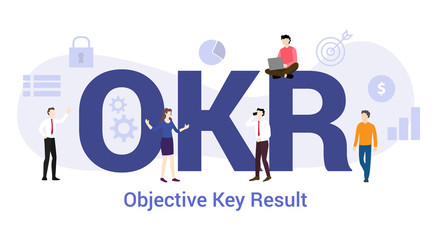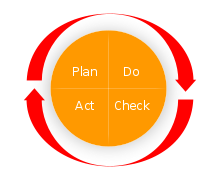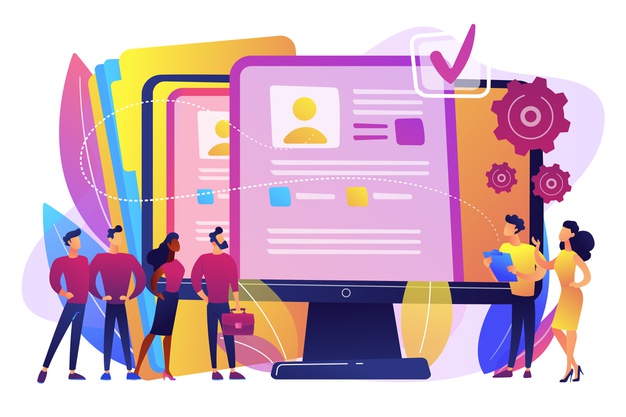Send Us a Message
Contact Information
Skizzle Technolabs India Pvt. Ltd.
Noel Focus, Kakkanad,
Kerala, India – 682021
It is undeniable fact that Effective Goal Management is not that easy!
It’s not only vital to set goals, but also important to manage them effectively to get the desired results. There are several management frameworks that’ll help you do this, and today let’s discuss two of them: OKRs and EFQM.
Before diving deeper into the major comparison of OKR & EFQM, let’s look at what they are, their history, and how they can help your organization.
Objectives and Key Results (OKR) is an objective-setting methodology that helps organizations, through the use of available resources, to reach a number of Key Results for measurable Objectives.

OKR has become a key methodology for top companies around the world. OKR fits the bill, especially in organizations where creativity needs to be tracked. To track these objectives, the Key Results act as measurable objectives.
OKR example: For a sales manager, OKRs should look something like this.
OKR 1
Objective- Recruit the best sales folks for the sales team
Key result 1- Hire 1 new inside-sales manager
Key result 2- Hire 5 new sales executives
OKR 2
Objective- Achieve the sales quota
Key result 1- $1 million in sales revenue
Key result 2- 2000 paid customers
Key result 3- 40,000 signups
Implementation of OKRs requires us to follow the below steps:
Communicate
To start off, arrange a meeting with everyone who’s going to be part of the OKR implementation phase. Inform everyone involved in the process because not every employee will know about OKRs. Make them aware of the benefits and the steps.
Fix a tool
Having a top-notch OKR tool to help you out is the key. A tool that doesn’t understand your requirement can cause more harm than good. A plethora of tools are available in the market, so make sure you choose a tool that’s easy to use and full of features.
Identify objectives
Discover all your objectives and place them in the OKR software. It’s important to identify both objectives and the set of key results you expect. Start with fewer objectives, and then scale with time.
Review Results
Once, you start getting results, it’s time to analyze them with the help of data from the software. These results will help you determine the next step as a team or an organization.
EFQM stands for the European Foundation for Quality Management. It was started by a bunch of European folks back in 1989, and it’s a non-profit foundation. The framework started in Europe and is being used actively around the world, especially in Latin America. The first-ever EFQM excellence model came out in 1992.

It is focused on helping organizations understand whether the path they are taking is the one towards excellence or doom. If doom, then this model provides tools and techniques to measure improvement in a defined period. Here, ‘cause’ and ‘effect’ are the key as organizations get to focus on what exactly they did and what results they got at the end. Understanding the gaps is the first step towards figuring out the right solutions for a particular organization.
The model has 3 components:
Key Management Principles
There are eight core values in this component.
Facilitators (Enablers)
This component is responsible for facilitating the inputs or action part of this component. Change the steps, and it will lead to a change in results.
Outcomes (Results)
Inputs lead to outputs. There are 4 results in this component.
EFQM excellence uses a continuous improvement cycle for performance management, and it is called RADAR logic. The logic helps organizations to figure out the impact of their strategies and action towards goal management.
It determines the results (outcomes) expected as part of the strategy.
Once you have a set of outcomes, now is the time to plan and develop a set of Approaches. The approaches will help deliver those results both in the present and future.
Once ready, Deploy the approaches in a way that the implementation phase is smooth and effective.
Post-deployment, Assess, and Refine these approaches based on the results achieved.
It helps to:
Example of an EFQM model: Let’s assume you want to use this model for a sales team and its performance.
Plan: To set strategic objectives, Identify the needs of your customers and their expectations.
Do: It’s time to implement processes and operate their functioning.
Check: Gather business results. Keep an eye on the processes, review, and analyze.
Act: Continuously improve process performance.

Differences are plenty. To start with the obvious, it’s clear EFQM is a broad-level framework compared to OKR. Through the model of excellence, EFQM focuses on inputs, outputs, stakeholders, relationships with the outside world, and much more. It makes it non-accessible for smaller teams or individual employees.
The focus is on excellence, so even when you get a result, you need to improve on that result and achieve maximum efficiency. The process requires time and energy, making it far more relevant for senior management or top leaders.
It is a challenge that OKR intends to solve with ease of use during the implementation phase. OKR is more focused on newer outcomes compared to EFQM. In OKR, once you reach the desired results for particular objectives, it’s time to move on to other objectives.
OKR and EFQM models are different from each other because both cater to a different set of people. The first focuses on a simple method of turning objectives into results. The problem is that’s why it doesn’t work when planning for long-term organization-wide strategies.
EFQM, on the other hand, is a handy tool for strategy because it involves all the stakeholders and other necessary parameters. Yes, it has a broad scope, but sometimes the strategies from the management don’t really get passed on to the employees effectively in the organization. Still, the model captures the nuances of the core business model.
Mostly, as an organization, you will have to use both the models for different sets of people in your organization depending upon their roles and what they need to do to play those roles well enough.
Goal tracking is one of many reasons why employee tracking software like SkizzleHR is important. Thankfully with SkizzleHR’s employee tracking dashboard, you can check deadlines, provide feedback, break down projects into manageable tasks, and generate the data needed to track goals to completion.
Looking to get started with goal management? Try SkizzleHR and get unrestricted access to all the features Free for a year long.

High-performing teams are the distinctive feature of an industry-leading business. This can ensure the business's success in the long run. Working in a team...
Read More
Since the pandemic hit the world, the new normal is working from home. Gen Y and Gen Z are the largest workforce units of...
Read More
You have much to consider when looking for a solution for human resources (HR) technology. What is the right fit for you? How are...
Read More
As we have seen human resources and information technology have become more intertwined during the last decade. Manufacturing, financials, sales and marketing, and supply...
Read MoreSkizzle Technolabs India Pvt. Ltd.
Noel Focus, Kakkanad,
Kerala, India – 682021